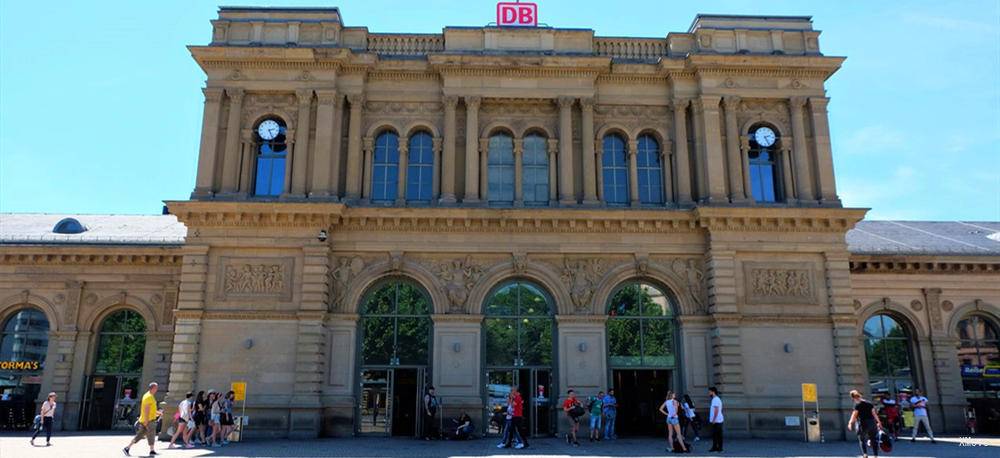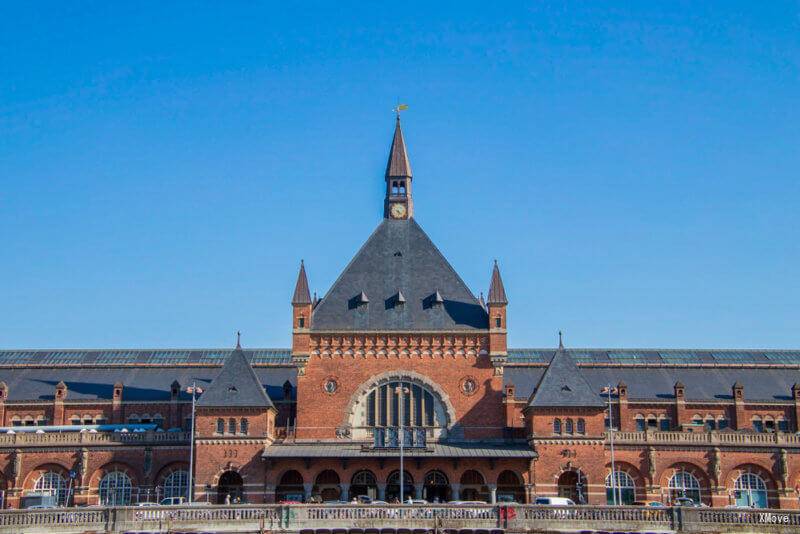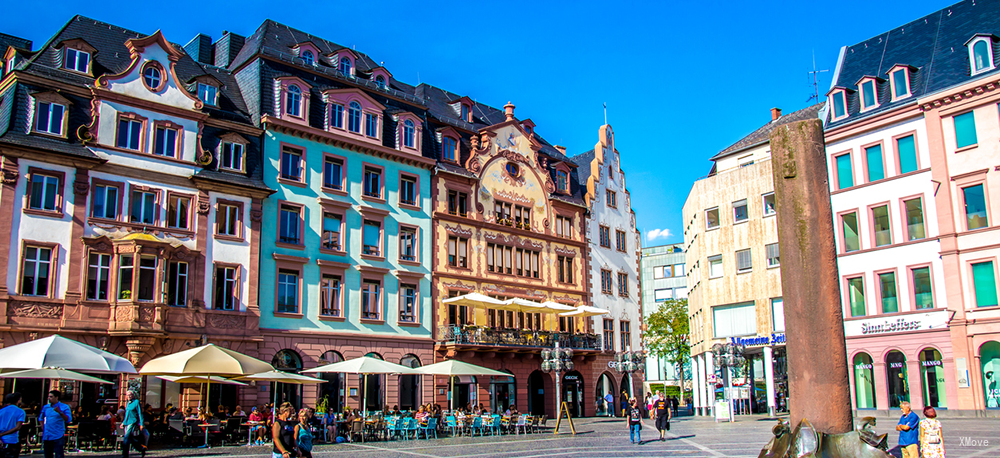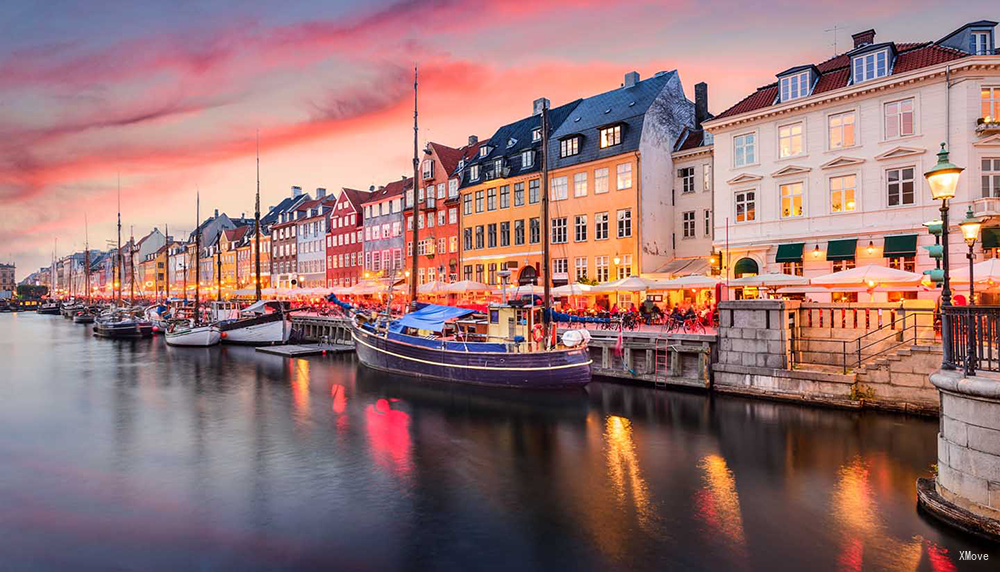Mainz Central to Köbenhavn H: Trains, Buses, Fares, Today's Connections, Routes, Duration, Types of Trains, Station Guides, Tips, Journey
Germany Train Tickets
Scan QR code, download G2Rail App to see Mainz Central's more live update, station guide, plan and photos



Train schedule Mainz Central(Mainz Hbf) to Köbenhavn H
Popular train routes departing from Mainz Central(Mainz Hbf)
* Essen Central(Essen Hbf)
* Bad Honnef(Rhein)
* Tuebingen Hbf(Tübingen Hbf)
* Innsbruck Central(Innsbruck Hbf)
* Liège Guillemins
* Köbenhavn H
* Kassel Central(Kassel Hbf)
Popular train routes arriving in Mainz Central(Mainz Hbf)
* Berchtesgaden Hbf
* Interlaken Východ(Interlaken Ost)
* Frankfurtské Hlavní Nádraží(Frankfurt(Main)Hbf)
* Mnichovské Hlavní Nádraží(München Hbf)
* Milan Central(Milano Centrale)
* Heidelberg Hlavní Nádraží(Heidelberg Hbf)
* Drážďanské Hlavní Nádraží(Dresden Hbf)
Popular train routes departing from Köbenhavn H
* Bydgoszcz Glowna
* Duesseldorf Hbf(Düsseldorf Hbf)
* Interlaken Ost
* Bremen Central(Bremen Hbf)
* Rotterdam Centraal
* Stuttgart Central(Stuttgart Hbf)
* Luebeck Hbf(Lübeck Hbf)
Popular train routes arriving in Köbenhavn H
* คูร์(Chur)
* Warendorf
* สถานีกลางอาเค่น(Aachen Hbf)
* เซนต์โอเดนเซ(Odense St)
* สถานีกลางเดรสเดิน(Dresden Hbf)
* Wismar
* สตราสบูร์ก(Strasbourg)

Mainz Central
Mainz Hbf ("Mainz Main Station", formerly Centralbahnhof Mainz) is the railway station of Mainz, Rhineland-Palatinate, Germany. It is used by about 60,000 passengers and tourists every day, making it the busiest station in the Rhineland-Palatinate region. The train station is a test area for the CCTV program using automatic face recognition.
The station is the end of the S8 line: Wiesbaden Hbf-Mainz Hbf-Rüsselsheim-Frankfurt Hbf-Hanau Hbf; Rhine - the main S-Bahn, which is the beginning of the Mainbahn to Frankfurt Hbf. It is serviced by 440 daily local and regional trains (StadtExpress, RE and RB) and 78 long-distance trains (IC, EC and ICE).
The station is the intersection of the Mainz tram network and an important bus hub for cities and regions (RNN, ORN and MVG).
Mainz Central - Station Guide | Departures and Arrivals | Popular RoutesKöbenhavn H
Located in the city centre, all trains pass through this station or start here. There are many cities in Denmark that can be reached by trains. In addition to the Danish cities, there are also famous cities such as Malmö in Sweden, Hamburg in Germany and Amsterdam in the Netherlands. All light rail express trains (except F line) all pass this site
There are many trains from Copenhagen to various cities in Denmark. There are trains to all parts of the country, including 12 minutes to the airport, and some important attractions, City Hall, pedestrian street, round tower and port are all within walking distance. Going to the little mermaid is relatively far away.
The international route is Copenhagen → Hamburg, passing through Lübeck. Or the night train departs from Copenhagen to Hamburg, Amsterdam, Frankfurt, Dresden, Prague and other places, or express trains to the Nordic cities of Gatpo Stockholm.
Köbenhavn H - Station Guide | Departures and Arrivals | Popular Routes

Mainz ( MYNTS, German: [maɪnts] is the capital and largest city of Rhineland-Palatinate, Germany. The city is located on the Rhine river at its confluence with the Main river, opposite Wiesbaden on the border with Hesse. Mainz is an independent city with a population of 217,118 (2018) and forms part of the Frankfurt Rhine-Main Metropolitan Region.Mainz was founded as Mogontiacum by the Romans in the 1st Century BC during Classical antiquity, serving as a military fortress on the northernmost frontier of the Roman Empire and as the provincial capital of Germania Superior. Mainz became an important city in the 8th Century AD as part of the Holy Roman Empire, becoming the capital of the Electorate of Mainz and seat of the Archbishop-Elector of Mainz, the Primate of Germany. Mainz is famous as the home of Johannes Gutenberg, the inventor of the movable-type printing press, who in the early 1450s manufactured his first books in the city, including the Gutenberg Bible. Historically, before the 20th century, the city was known in English as Mentz and in French as Mayence. Mainz was heavily damaged during World War II, with more than 30 air raids destroying about 80 percent of the city's center, including most of the historic buildings. Today, Mainz is a transport hub and a center of wine production.
Mainz - Guide, Attractions, Tours, Sightseeings | Train from/to Mainz | Popular RoutesCopenhagen (Danish: København [kʰøpm̩ˈhaʊ̯ˀn] ) is the capital and most populous city of Denmark. As of July 2018, the city has a population of 777,218 (616,098 in Copenhagen Municipality, 103,914 in Frederiksberg Municipality, 43,005 in Tårnby Municipality, and 14,201 in Dragør Municipality). It forms the core of the wider urban area of Copenhagen (population 1,320,629) and the Copenhagen metropolitan area (population 2,057,737). Copenhagen is situated on the eastern coast of the island of Zealand; another small portion of the city is located on Amager, and it is separated from Malmö, Sweden, by the strait of Øresund. The Øresund Bridge connects the two cities by rail and road. Originally a Viking fishing village established in the 10th century in the vicinity of what is now Gammel Strand, Copenhagen became the capital of Denmark in the early 15th century. Beginning in the 17th century it consolidated its position as a regional centre of power with its institutions, defences and armed forces. After a plague outbreak and fire in the 18th century, the city underwent a period of redevelopment. This included construction of the prestigious district of Frederiksstaden and founding of such cultural institutions as the Royal Theatre and the Royal Academy of Fine Arts. After further disasters in the early 19th century when Horatio Nelson attacked the Dano-Norwegian fleet and bombarded the city, rebuilding during the Danish Golden Age brought a Neoclassical look to Copenhagen's architecture. Later, following the Second World War, the Finger Plan fostered the development of housing and businesses along the five urban railway routes stretching out from the city centre. Since the turn of the 21st century, Copenhagen has seen strong urban and cultural development, facilitated by investment in its institutions and infrastructure. The city is the cultural, economic and governmental centre of Denmark; it is one of the major financial centres of Northern Europe with the Copenhagen Stock Exchange. Copenhagen's economy has seen rapid developments in the service sector, especially through initiatives in information technology, pharmaceuticals and clean technology. Since the completion of the Øresund Bridge, Copenhagen has become increasingly integrated with the Swedish province of Scania and its largest city, Malmö, forming the Øresund Region. With a number of bridges connecting the various districts, the cityscape is characterised by parks, promenades and waterfronts. Copenhagen's landmarks such as Tivoli Gardens, The Little Mermaid statue, the Amalienborg and Christiansborg palaces, Rosenborg Castle Gardens, Frederik's Church, and many museums, restaurants and nightclubs are significant tourist attractions. The largest lake of Denmark, Arresø, lies around 27 miles (43 kilometers) northwest of the City Hall Square. Copenhagen is home to the University of Copenhagen, the Technical University of Denmark, Copenhagen Business School and the IT University of Copenhagen. The University of Copenhagen, founded in 1479, is the oldest university in Denmark. Copenhagen is home to the FC København and Brøndby football clubs. The annual Copenhagen Marathon was established in 1980. Copenhagen is one of the most bicycle-friendly cities in the world. The Copenhagen Metro launched in 2002 serves central Copenhagen. The Copenhagen Metro is scheduled to expand radically with the opening of the City-ring line during fall 2019, the new line will connect all inner boroughs of the city by metro, including The Central Station, and will open up 17 new stations for Copenhageners. The new metro line is a part of the city's strategy to transform mobility towards sustainable modes of transport such as public transport and cycling as opposed to automobility. Additionally the Copenhagen S-train, the Lokaltog (private railway) and the Coast Line network serves and connects central Copenhagen to outlying boroughs. The Copenhagen-Ringsted Line will relieve traffic congestion in the corridor between Roskilde and Copenhagen. Serving roughly two million passengers a month, Copenhagen Airport, Kastrup, is the busiest airport in the Nordic countries.
Copenhagen - Guide, Attractions, Tours, Sightseeings | Train from/to Copenhagen | Popular Routes
Germany Train Tickets
Scan QR code, download G2Rail App to see Mainz Central's more live update, station guide, plan and photos



Hot Journeys
* Prato(Prato) -> Florence
* Paris -> Avignon
* Milan -> Rome(Roma)
* Budapest(Budapest) -> Vienna(Wien)
* Interlaken -> Lucerne(Luzern)
* Rome(Roma) -> Florence
* Rome(Roma) -> Naples
* Warsaw(Warszawa) -> Berlin(Berlin)
* Geneva(Genève) -> Paris
* Interlaken -> Swiss Alps Jungfrau Aletsch
* Seoul(서울) -> Gwangju Metropolitan City(광주광역시)
* Florence -> Milan
* Cologne(Köln) -> Frankfurt
* Madrid(Madrid) -> Barcelona
* Rovaniemi(Rovaniemi) -> Helsinki(Helsinki)
* Manarola -> La Spezia(La Spezia)
* Seoul(서울) -> Busan(부산)
* Warsaw(Warszawa) -> Krakow(Kraków)
